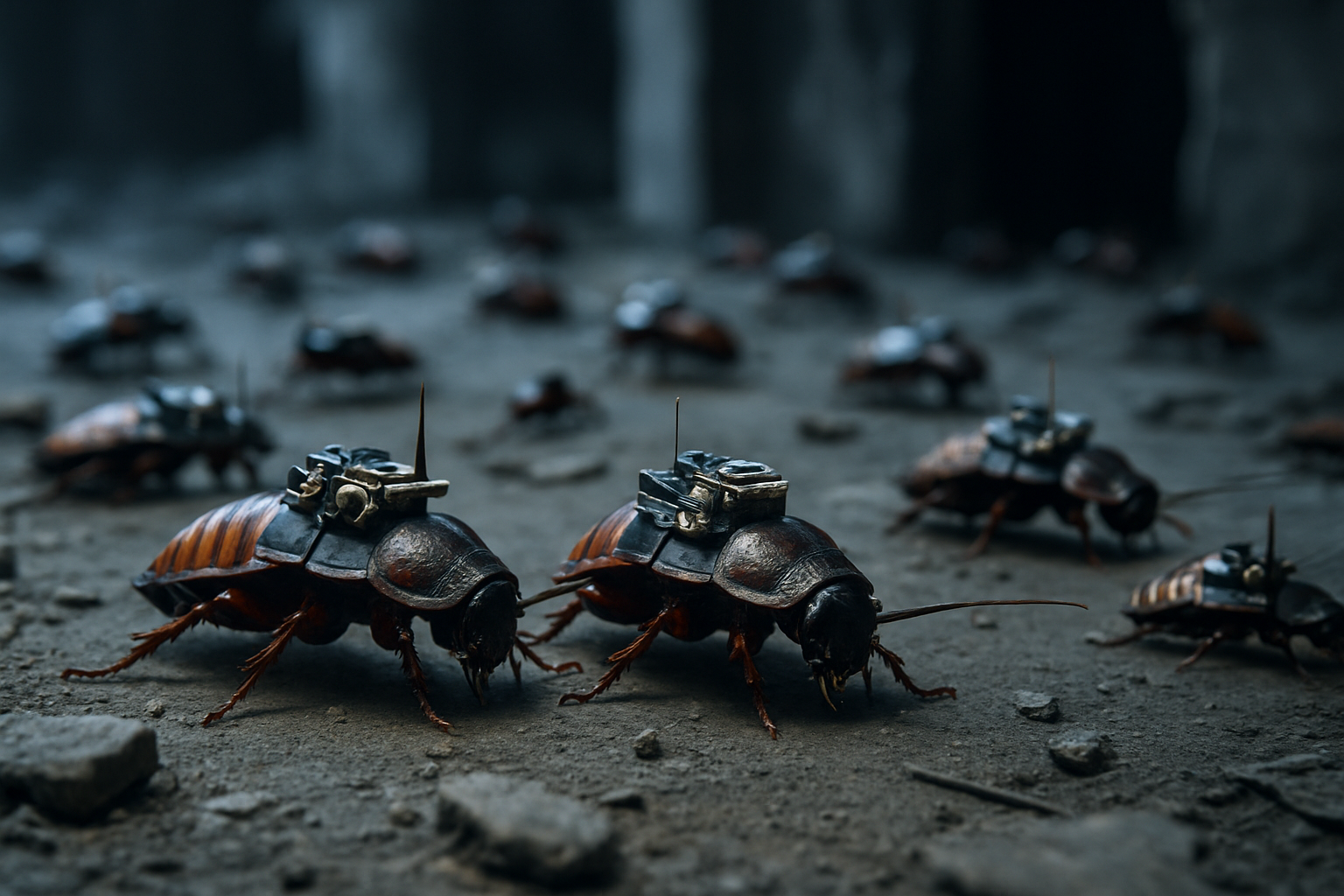In a terrifying tech leap, scientists have successfully transformed live cockroaches into bio robotic swarms that can be remotely controlled for surveillance missions. This unsettling development funded by millions in defense grants blurs the line between biological life and machine intelligence. By fitting these insects with tiny electronic backpacks, researchers are unlocking new ways to gather intelligence in areas previously considered inaccessible or too dangerous. But while the innovation may offer unmatched tactical advantages, it raises urgent questions around ethics, privacy, and even animal welfare.
The Birth of the Bio Bot Cockroach
The idea of insect cyborgs isn’t entirely new. However, the recent breakthroughs by Cyborg Insect Lab, a Berlin based robotics firm, have pushed this concept into fully operational territory. Using Madagascar hissing cockroaches, the researchers attach microcontroller equipped backpacks that stimulate the insects’ sensory systems to guide their movement. These cockroach robots can crawl into tight spaces like collapsed buildings, enemy bunkers, or radioactive zones where human access is impossible.
Funded heavily by European defense initiatives and private security firms, the goal is to scale these swarms for real-time reconnaissance, espionage, and disaster search missions. The project is being hailed as a terrifying tech leap that opens new doors for military strategy.
Cockroach Swarms in Simulated Urban Warfare
In a recent defense simulation in Germany’s Rheinland Pfalz province, cyborg cockroaches were deployed in a mock urban warfare zone. Armed with microphones and thermal sensors, the insects infiltrated multiple floors of a hostile building. Within minutes, live data including heat maps and voice recordings was transmitted to a command center stationed 400 meters away.
Dr. Sebastian Kruger, lead engineer of the operation, shared. We were amazed at how effective these bio robots were. No drone or robot could have maneuvered through such confined spaces as precisely as the cockroach swarms did. This experiment, though classified in parts, has already generated interest from international intelligence agencies seeking non-traditional surveillance solutions.
Promise and Peril
Not all voices are cheering the innovation. Dr. Linda Hayes, an ethics professor at the University of Zurich, warns. We are entering a domain where the autonomy of a living creature is compromised for human gain. The terrifying tech leap here is not just mechanical it’s moral.
Military technologist Ahmed Saleem adds another layer of complexity, What makes this development so unique and dangerous is its scalability. If such tech falls into the wrong hands, it could be weaponized or used for mass surveillance in civilian areas.
The Technology Behind the Backpack
Each cockroach backpack weighs less than 3 grams and includes, Microcontroller unit (MCU), Wireless communication module, Electrodes connected to antenna and cerci. Battery lasting up to 40 minutes The system manipulates the cockroach’s natural instincts using micro pulses. Left antenna stimulation causes the insect to turn right, and vice versa. It’s a biological override brilliant in design but potentially dystopian in application.
Researchers claim the terrifying tech leap lies in its seamless integration between biological sensors (cockroach behavior) and artificial command inputs. No external camera or lidar is needed the insect becomes the perfect mobile surveillance unit.
A Veteran’s View
Former NATO intelligence officer, John Rutherford, provides this firsthand reflection. I’ve seen technology come a long way, from satellite drones to neural networks, but nothing feels as eerie as these insect swarms. It’s almost like using nature against itself. Yes, I see the utility, but I worry about where it leads.
Global Implications: Who Regulates This?
Currently, there’s no international treaty or ethical framework addressing biologically integrated military tech. The United Nations has expressed concern over autonomous weaponization of biological entities, but enforcement remains vague.
Countries like China, the U.S and Israel are reportedly exploring similar avenues. If not regulated, this terrifying tech leap could spiral into a new form of biological warfare.
A Future Crawling with Questions
The transformation of live cockroaches into remote controlled bio robots is nothing short of revolutionary but also deeply controversial. As technology and biology collide, we must ask: What are the long term consequences? How far is too far? And who decides?
While the terrifying tech leap offers undeniable advantages in espionage and disaster response, it may also become the spark that forces global communities to rethink the ethics of innovation altogether.

